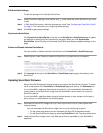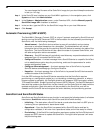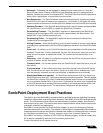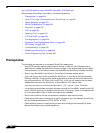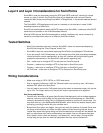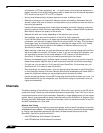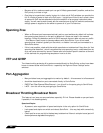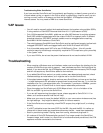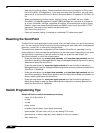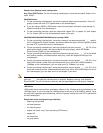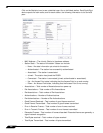
SonicPoint Deployment Best Practices
535
SonicOS 5.8.1 Administrator Guide
Troubleshooting Older SonicPoints
If you have an older SonicPoint and it’s consistently port flapping, or doesn’t power up at all, or
is stuck reboot cycling, or reports in the GUI as stuck in provisioning, check to see if you are
running a current version of firmware, and that the SonicWALL UTM appliance has public
internet access. You may need to RMA for a newer SonicPoint.
VAP Issues
• You will need to manually adjust the broadcast/beacon timing when using multiple SSIDs,
if using versions of SonicOS Enhanced older than 4.0.1.0 (set beacon to 800).
• Only VLAN-supported SonicWALL platforms can offer VAP features for existing releases.
Each SSID should be associated with the unique VLAN ID to segment traffic in different
broadcast domains. SDP/SSPP protocol packets must be untagged before reaching
SonicWALL WLAN interface or SonicPoint.
• The switch between SonicWALL and SonicPoint must be configured properly to allow both
untagged SDP/SSPP traffic and tagged traffic with VLAN ID for each VAP SSID.
• If at all possible assign each VAP to its own VLAN/Security Zone -- this will provide
maximum security and although not explicitly required for PCI compliance, puts you solidly
in the "green" zone.
• If you use VLAN’s, do not use the parent interface and do not use the default VLAN.
Troubleshooting
• When creating a Wireless zone and interface, make sure to configure the interface for the
number of SonicPoints you wish to support -- new interfaces are set to ‘No SonicPoints’ by
default. If you do not do this, the UTM appliance will not create the necessary DHCP scope
and will not acquire any SonicPoints added to the interface.
• If you added SonicPoints and only a certain number were detected and acquired, check
interface settings as noted above, as it might be set for too few SonicPoints.
• If throughput seems sluggish, check to see how many SonicPoints you have on an interface
– in large deployments it’s advisable to spread them across more than one. Try to limit the
interfaces to a 4-to-1 oversubscription ratio. For example, if you have a 100Mbps, you can
safely attach up to 20 SonicPoints to it and expect reasonable performance.
• Given throughput on SonicPoints only 20-22 Mbps at best – this is a limitation of the
802.11a and 802.11g and not the SonicPoint.
• If you are still experiencing throughput issues, please upgrade to SonicOS 4.0.1.0 or
newer, as it contains several fixes that will help.
• Make sure your security zone (the default WLAN, or your own custom wireless zone) has
the right settings – they might be blocking traffic for various reasons.
• If the SonicPoints are not acquiring, check DHCP scopes; they might be off, or missing
entirely.
• It is NOT advisable to use the same SSID for the 802.11bg and the 802.11a radios, as
clients with tri-band cards may experience disconnect issues – name them separately.
• Stuck in provisioning mode? Unplug, clear from config, reboot and plug back in.
• All versions of SonicOS Enhanced after version 3.5 no longer contain the SonicPoint
firmware image, and in order for a SonicPoint to be discovered and provisioned, the UTM
appliance must be connected to the Internet.



